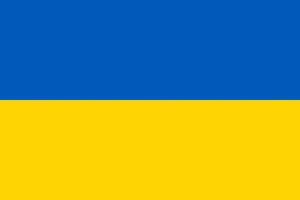Difference between revisions of "Language/Ukrainian/Grammar/Plural-Nouns"
m (Quick edit) |
m (Quick edit) |
||
| Line 131: | Line 131: | ||
<span gpt></span> <span model=gpt-3.5-turbo></span> <span temperature=1></span> | <span gpt></span> <span model=gpt-3.5-turbo></span> <span temperature=1></span> | ||
==Videos== | |||
===Ukrainian Lesson 7. Plural Nouns - YouTube=== | |||
<youtube>https://www.youtube.com/watch?v=ZUmGaKZvuNc</youtube> | |||
{{Ukrainian-Page-Bottom}} | {{Ukrainian-Page-Bottom}} | ||
Revision as of 15:46, 22 March 2023
As a Ukrainian language teacher for over 20 years, I know that learning Ukrainian noun plurals can be a struggle. However, with a bit of practice and some interesting cultural facts, forming and using plural nouns will become second nature. Let's get started!
Plural Nouns in Ukrainian
In Ukrainian, plural nouns are used to describe more than one person, animal, or thing. Unlike English, where only some nouns have different plural forms, all Ukrainian nouns have their own unique plural form.
There are two types of plural forms in Ukrainian: regular and irregular.
Regular Plural Nouns
To form most regular plural nouns in Ukrainian, you need to change the ending of the singular noun. Here are the basic rules for forming regular plural nouns:
- Masculine nouns that end in a consonant: add "и" at the end. For example:
| Ukrainian | Pronunciation | English |
|---|---|---|
| чоловік | cholo-veek | man |
| чоловіки | cholo-vee-ky | men |
- Masculine nouns that end in "й": replace "й" with "ї" at the end. For example:
| Ukrainian | Pronunciation | English |
|---|---|---|
| син | seen | son |
| сини | see-ny | sons |
- Feminine nouns that end in "а": replace "а" with "и" at the end. For example:
| Ukrainian | Pronunciation | English |
|---|---|---|
| мама | ma-ma | mom |
| мами | ma-my | moms |
- Feminine nouns that end in "я": replace "я" with "і" at the end. For example:
| Ukrainian | Pronunciation | English |
|---|---|---|
| дочка | doch-ka | daughter |
| дочки | doch-ky | daughters |
- Neuter nouns that end in "о" or "е": add "а" at the end. For example:
| Ukrainian | Pronunciation | English |
|---|---|---|
| вікно | veek-no | window |
| вікна | veek-na | windows |
Irregular Plural Nouns
Unfortunately, not all Ukrainian plural nouns follow the regular rules. Many nouns have their own unique irregular plural forms. Here are some common examples:
- Nouns that end in "ість", "ізьм", "ень", and "онь": replace the ending with "ки". For example:
| Ukrainian | Pronunciation | English |
|---|---|---|
| кіт | keet | cat |
| киці | ky-tsi | cats |
| приклад | pree-klad | example |
| прикладки | pree-klad-ky | examples |
- Nouns that end in "інь", "ень", and "онь": add "і" before the final consonant. For example:
| Ukrainian | Pronunciation | English |
|---|---|---|
| лев | lev | lion |
| леви | le-vy | lions |
| колесо | ko-le-so | wheel |
| колеса | ko-le-sa | wheels |
It's important to note that there are many other irregular plural noun forms. The best way to learn them is through practice and exposure to the language.
Using Plural Nouns in Sentences
Now that you know how to form plural nouns in Ukrainian, let's practice using them in sentences.
- Я бачив дві собаки в парку. (Ya bachyv dvi sobaky v parku.) - I saw two dogs in the park.
- Мої друзі грають у футбол. (Moyi druzi hrayut u futbol.) - My friends are playing soccer.
- Вчителька показала нам кольорові квіти. (Vchytelka pokazala nam kol'orovi kvity.) - The teacher showed us colorful flowers.
- Ми беремо дві колбаси з собою на пікнік. (My beremo dvi kolbasy z soboyu na piknik.) - We are taking two sausages with us for the picnic.
Notice that the use of plural nouns is essential in these sentences, and that the endings of the nouns change depending on whether they are singular or plural. Keep practicing, and soon you'll be able to form and use plural nouns with ease!
Conclusion
Learning how to form plural nouns in Ukrainian is an important step towards proficiency in the language. By understanding the regular and irregular plural noun forms and practicing their use in sentences, you'll be well on your way towards mastering Ukrainian grammar. As you continue your studies, don't forget to immerse yourself in Ukrainian culture - this will help you understand the language on a deeper level. Good luck and happy learning!
Videos
Ukrainian Lesson 7. Plural Nouns - YouTube
